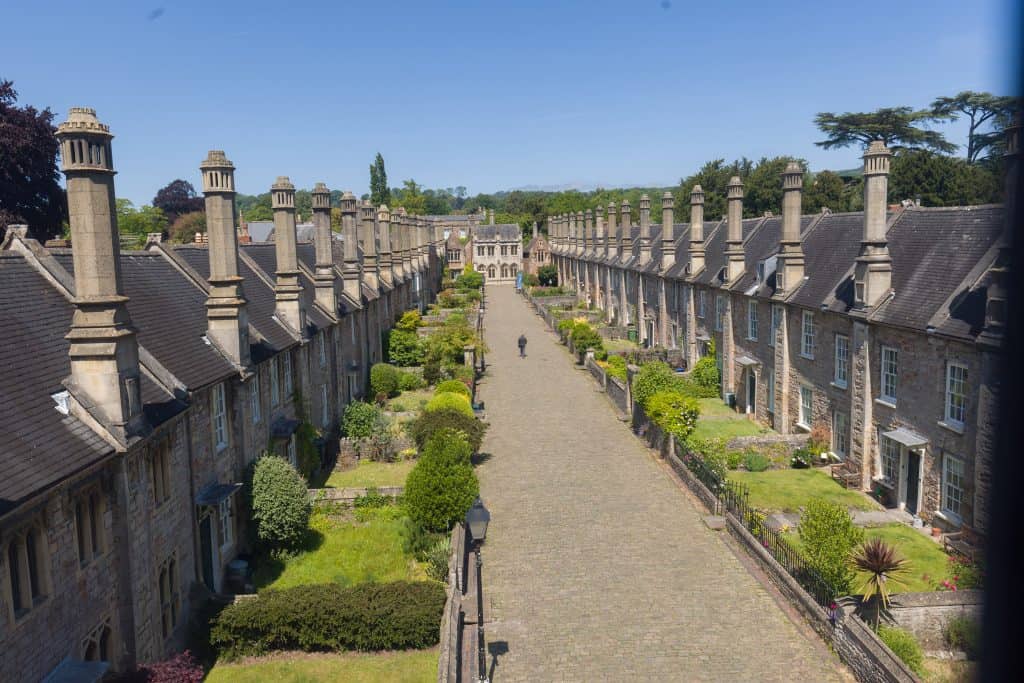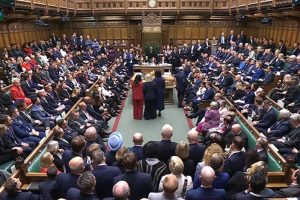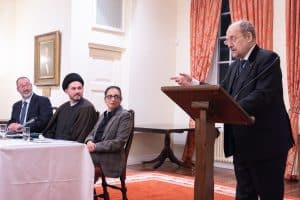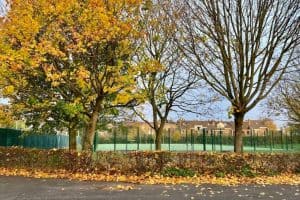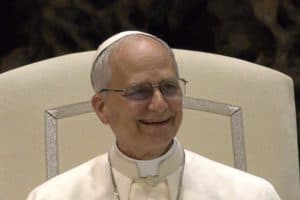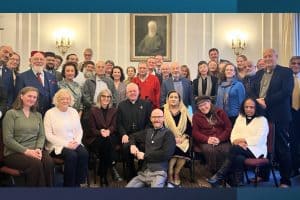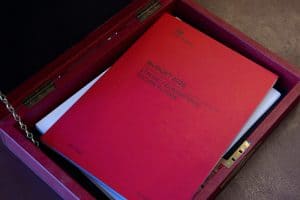Around 400 people have been arrested following riots in 22 towns and cities across England and Northern Ireland over the past week. Mosques and hotels housing asylum seekers have been targeted and police in riot gear have tried to maintain order. Yesterday protesters and counter protesters gathered in Birmingham and Plymouth. The riots began after three girls were stabbed to death in Southport. False claims that their attacker was a Muslim asylum seeker triggered the first riot and far right groups have since been stoking the unrest online. Last night, the people of Southport remembered the girls with a vigil, releasing pink balloons and giant bubbles.
Muslim Council of Britain welcomes emergency security measures
The Muslim Council of Britain has welcomed the news that mosques at risk of violent disorder are being offered greater protection with emergency security measures. Under the new process, the police, local authorities and mosques can ask for rapid security to be deployed, protecting communities and allowing for a return to worship as quickly as possible. The announcement will build on the existing Protective Security for Mosques Scheme, with up to £29.4 million already available this year to fund security at mosques and Muslim faith schools. Home Secretary, Yvette Cooper said: “Britain is a proud and tolerant country, and nobody should make any excuses for the shameful actions of the hooligans, thugs and extremist groups who have been attacking police officers, looting local shops or attacking people based on the colour of their skin”. The MCB had written to the Home Secretary regarding the matter and has welcomed her statement.
Faith leaders condemn violent disorder
Meanwhile, faith leaders across the UK have united in strong condemnation of the violent disorder over the past week, calling for unity and calm, according to the Church Times. A statement was issued by faith leaders in Merseyside, led by the Bishop of Liverpool, John Perumbalath: “Too many people have sought to use the tragedy to create division and hate. Division can destroy the very relationships and environment that we depend upon every day of our lives… At this difficult time, let us remember that there is far more that unites than divides us.” The statement was co-signed by Roman Catholic, Muslim, Jewish, Sikh, and Hindu community leaders.
Muslim gravestones desecrated in Burnley
Gravestones in a Muslim section of Burnley cemetery have been daubed with grey paint in an act of sacrilege described as evil, by a local councillor. Burnley Council has engaged a memorial mason to clean the gravestones as a “matter of urgency”. Lancashire Police said it was treating the offence as a hate crime and CCTV is being used to find those responsible.
Muslim owner of a café set alight in Belfast protests says ‘there’s no hope’
In Belfast, Mohammed Idris, who owns Bash café, in the south of the city, says he will not reopen after his business was set alight during violent protests. Mr Idris told BBC News NI that his businesses have been targeted before, saying his shop on Sandy Row was attacked last year. “My computer shop was completely damaged just like this café. This café was a hope, a place for a community – there is no hope here now”. Mohammed has lived in Belfast since 2002, but says living there has become more difficult in recent years; “We have to make our life here, but now all our friends, everyone is asking ‘Where do we go now?’ We come from different countries – there are wars in our countries – what do we do now?”
Call for government to ensure safety of asylum seekers
The Director of the Jesuit Refugee Service, Sarah Teather, has called on the government to ensure safety for people seeking asylum following the riots – “It is imperative that the government takes urgent steps to ensure the safety of all those being targeted, including people in the asylum system, who in many cases have already fled violence and experienced profound trauma. At the same time, every one of us has a responsibility to challenge the disinformation and racist, divisive rhetoric fuelling this hostility. Too often, people fleeing danger and searching for a chance to rebuild their lives here have been dehumanised by politicians and others in a position of influence” Full statement here
Jewish leaders denounce thuggery and vow to stand united
Jewish organisations have also condemned the riots. The Jewish Chronicle quotes the Board of Deputies president Phil Rosenberg who denounced the “lawlessness and thuggery”. Writing on X, the Jewish Leadership Council said: “The far-right and racist riots we have seen sweep across the country over the weekend are utterly shocking and reprehensible. We wholly condemn these shameful attacks which have seen mosques, hotels housing migrants, and homes of migrant families targeted by rioters.” Welcoming the government’s efforts “to ensure violence is met with the full force of the law and to protect the security of Muslim and other communities under attack,” the JLC said: “Now is the time for us to stand together and reject this vile hatred.”
‘Beautiful interactions’ with protesters outside Liverpool mosque
The BBC reports that among the many striking images emerging from the wave of unrest, were photos of Muslims embracing protesters outside one of the country’s first mosques, the Abdullah Quilliam Mosque in Liverpool. After the anger had calmed, mosque volunteer, Imam Adam Kelwick, and other worshippers attempted to speak to those present. Mr Kelwick said he found people not to have been motivated by anything in particular – rather just lashing out in a state of general frustration. He said: “None of the people who I spoke to mentioned Southport. I don’t think they knew what they were protesting about – I think they’re just angry, fed up”. In fact, he said there were “beautiful interactions” as the group from the mosque were able to “break bread” and listen to some people’s concerns in “deep conversations”. Photographs showed the sharing of food, hugs and handshakes were among the more positive posts being shared widely on social media. “Some of the most vocal protesters, after everyone else had gone, came inside the mosque for a little tour,” said Mr Kelwick, who saw some of Saturday’s clashes from a distance. He said: “There were thugs among them but there were also genuine concerns. The priority has to be safety and security and everyone needs to calm down”.
OTHER NEWS
Oldest street in Europe by Wells Cathedral awarded £4.4million lottery funding for repairs
The National Lottery Heritage fund is awarding £4.4 million to restore Vicars’ Close, a quadrangle street next to Wells Cathedral. It’s the oldest street in Europe, dating from the 14th century, with 27 Grade I listed residencies, which were built to house the Wells Cathedral adult choir. The houses, though in poor state of repair, are home to the current choir and their families, vergers, staff and private tenants. The Fund is also announcing £579k to St Peter’s Church in Forncett, Norfolk, with a Saxon round tower dating back to 1000AD; £587k to The Heart of the Headland project at the 12th century St Hilda’s Church in Hartlepool; £965K to St Mary’s Church in Totnes, a Grade I listed building dating from the 11th Century which is steeped in history; £618k to St Osyth Priory and Parish Trust in Clacton-on-Sea, a Grade I listed building founded around 1120; and £145k rising to £1.3million to St. Andrew’s Althorne Parochial Church Council, in Chelmsford, to stabilise the medieval structure.
British library hosts collection of ancient Buddhist texts
A huge collection of ancient Chinese documents which throw light on religious and civic life in the first millennium in China goes on display at the British Library in London in September. “A Silk Road : Life in Ancient Dunhuang” includes the earliest examples or printed texts including the world’s earliest dated, printed book, the Diamond Sutra. The discovery of Mogao Library Cave, or Cave 17, near Dunuang in Western China was a watershed moment in archaeology, leading some scholars to compare its significance to that of Tutankhamun’s Tomb. Found in 1900 by a Daoist priest, the cave had been sealed for nearly 900 years and was filled with tens of thousands of manuscripts, printed documents and artefacts, dating from the fifth to the beginning of the 11th century. The cave contained numerous Buddhist texts, including rare sutras, commentaries, and apocryphal works. These are crucial for understanding the spread and development of Buddhism across Asia, as well as the religious practices and beliefs of the time.
Church of Scotland minister’s pilgrimage to Hiroshima to honour his father
A Church of Scotland minister has fulfilled a 60-year dream to make a pilgrimage to Japan in honour of his father who was a prisoner there during the Second World War. The Rev Ian Gilmour travelled to Hiroshima where Private David Gilmour was held in a work camp for more than three years. His father, who served with the Royal Army Service Corps, was captured by the Japanese during the Battle of Singapore in 1942. Like all Japanese prisoners of war, he was badly mistreated, forced to work tirelessly on a minuscule diet of poor-quality rice and suffered from Beriberi disease and dysentery due to malnutrition. He was in and out of hospital during his captivity and only weighed six stone when he was set free on 15 August 1945 – Victory over Japan Day – which brought the war to an end. After returning to his home in Glasgow, he refused to eat rice ever again. But despite his traumatic ordeal, he was “not bitter” towards the Japanese and told his wife Mary and three sons that he wanted to return to the country one day to see what it was like in peacetime. Sadly, this was not to be because his time in the camp took an enormous toll on his physical and mental health and he died at the age of 45 in 1963.
The monk and the Hippo cleaning waterways in Bangkok
“How a Monk and a Hippo joined forces to tackle Bangkok’s plastic pollution” is the headline in the Guardian’s series – Seascape the State of our Oceans. It focuses on the story of Wat Chak Daeng temple’s abbot, Phra Mahapranom Dhammalangkaro, who was so dismayed by the pollution in the Chao Praya River and the rubbish-strewn grounds surrounding it that he built a recycling centre in the temple grounds, which evolved from collecting a handful of bottles to upcycling 300 tonnes of plastic a year. He was unable to clean the river itself until he met Tom Peacock-Nazil, chief executive of Seven Clean Seas, an organisation that finds solutions for plastic pollution. Last week the two men launched the Hippo, a solar-powered boat, which aims to remove 1.4m kilos of plastic a year from Bangkok’s busiest waterway. As a novice monk in the 1980s, Phra remembers seeing children playing in the river and people scooping up handfuls of water to drink. But when he arrived at the 240-year-old temple as abbot many years later, he was saddened by the sight of the dirty river and the rubbish-strewn grounds surrounding it. Now he has a floating ally in his efforts to clean up the river. The Hippo has created the final link in Wat Chak Daeng’s circular economy and the aim of the team is to build more Hippos to tackle other polluted rivers elsewhere in Thailand and south-east Asia.
Pope’s love of tragedies and the valuable art of reading
The Guardian puts the spotlight on a letter written by the Pope and published in eight languages saying that reading novels and poems is valuable and should be encouraged in the training of future priests. The pontiff cites novelists CS Lewis and Marcel Proust as well as poets such as TS Eliot and Paul Celan in a letter published in eight languages on Sunday. In the letter, Francis revealed his personal literary tastes. “I, for my part, love the tragedians, because we can all embrace their works as our own, as expressions of our own personal drama,” he wrote. “In weeping for the fate of their characters, we are essentially weeping for ourselves, for our own emptiness, shortcomings and loneliness.” Between 1964 and 1965, when Francis was 28, he taught literature at a Jesuit school in Santa Fe, Argentina. He said: “I taught the last two years of high school and had to ensure that my pupils studied El Cid. The students were not happy; they used to ask if they could read García Lorca instead. So I decided that they could read El Cid at home, and during the lessons I would discuss the authors the students liked best”.

